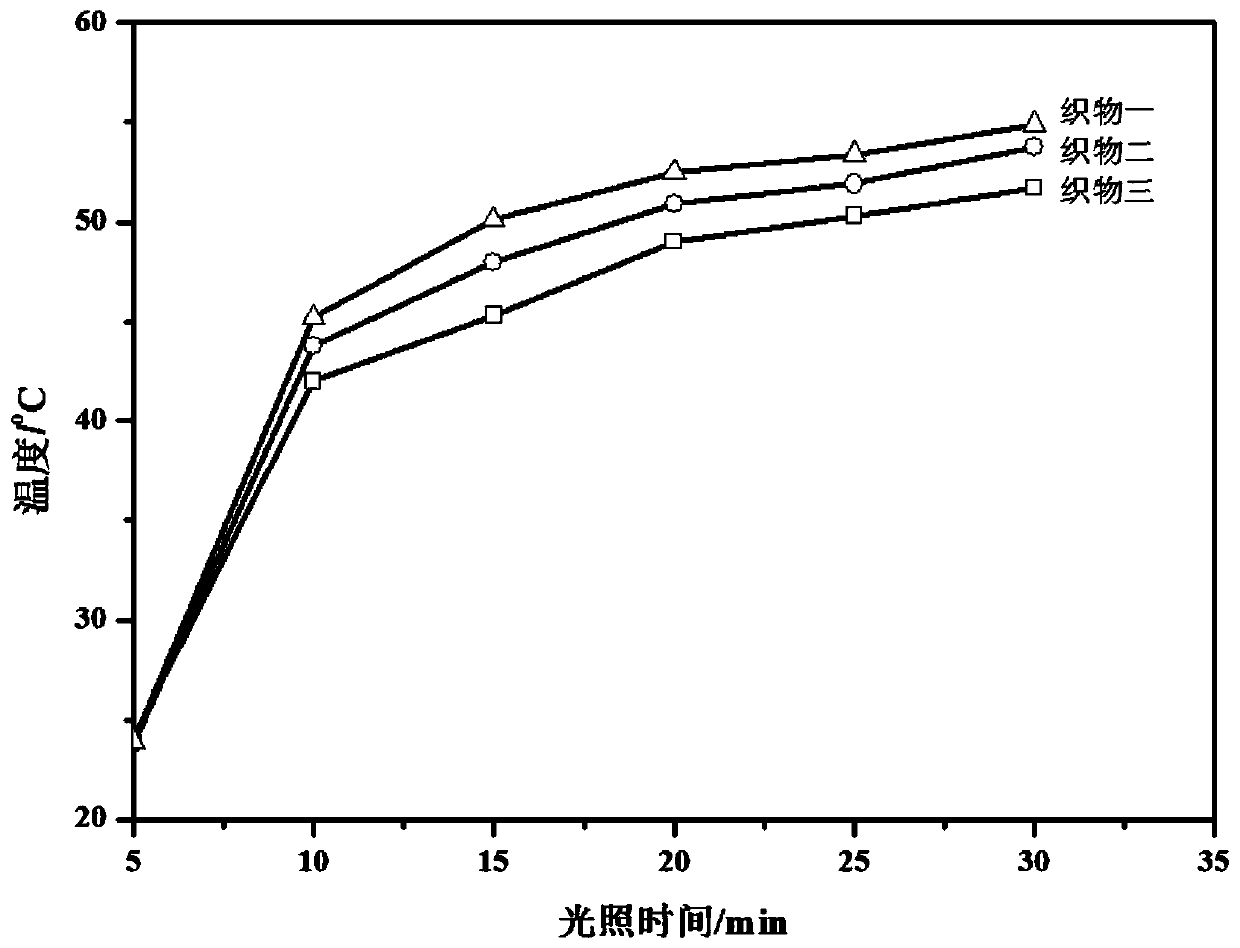Light absorption heating blended yarn
A light-absorbing heat-generating and blended yarn technology, which is applied in the yarn field, can solve the problems affecting the breathable and moisture-permeable performance of fabrics, and achieve good light-absorbing and heat-generating properties, easy production and implementation, and excellent thermal insulation performance.
- Summary
- Abstract
- Description
- Claims
- Application Information
AI Technical Summary
Problems solved by technology
Method used
Image
Examples
Embodiment 1
[0015] A light-absorbing and heat-emitting blended yarn, prepared from the following fibers in mass percentage: 25% cotton fiber, 35% nano-heating acrylic blended staple fiber, 20% polyester hollow fiber and 20% spandex fiber, wherein the nano-heating acrylic fiber The preparation process of the blended staple fiber is: Step 1, the modified acrylic staple fiber prepared by blending nano-ceramic particles, nano-volcanic rock powder and acrylic fiber spinning solution; Step 2, mixing the modified acrylic staple fiber with cotton fiber , polypropylene fiber is blended, and the blending composition percentage of described modified acrylic fiber staple fiber and cotton fiber, polypropylene fiber is 40%: 30%: 30%, makes nano-ceramic acrylic fiber blended staple fiber; Described light-absorbing and heating blended yarn The preparation method of the yarn is as follows: interweaving and blending the nano-ceramic acrylic fiber blended staple fiber prepared above with cotton fiber, polyes...
Embodiment 2
[0021] A light-absorbing and heat-generating blended yarn prepared from the following fibers in mass percentage: 20% cotton fiber, 30% nano-heating acrylic blended staple fiber, 15% polyester hollow fiber and 35% spandex fiber, wherein the nano-heating acrylic fiber The preparation process of the blended staple fiber is: Step 1, the modified acrylic staple fiber prepared by blending nano-ceramic particles, nano-volcanic rock powder and acrylic fiber spinning solution; Step 2, mixing the modified acrylic staple fiber with cotton fiber , polypropylene fiber is blended, and the blending composition percentage of described modified acrylic fiber staple fiber and cotton fiber, polypropylene fiber is 40%: 30%: 30%, makes nano-ceramic acrylic fiber blended staple fiber; Described light-absorbing and heating blended yarn The preparation method of the yarn is as follows: interweaving and blending the nano-ceramic acrylic fiber blended staple fiber prepared above with cotton fiber, polye...
Embodiment 3
[0027] A light-absorbing and heat-emitting blended yarn, prepared from the following fibers by mass percentage: 30% cotton fiber, 40% nano-heating acrylic blended staple fiber, 25% polyester hollow fiber and 5% spandex fiber, wherein the nano-heating acrylic fiber The preparation process of the blended staple fiber is: Step 1, the modified acrylic staple fiber prepared by blending nano-ceramic particles, nano-volcanic rock powder and acrylic fiber spinning solution; Step 2, mixing the modified acrylic staple fiber with cotton fiber , polypropylene fiber is blended, and the blending composition percentage of described modified acrylic fiber staple fiber and cotton fiber, polypropylene fiber is 40%: 30%: 30%, makes nano-ceramic acrylic fiber blended staple fiber; Described light-absorbing and heating blended yarn The preparation method of the yarn is as follows: interweaving and blending the nano-ceramic acrylic fiber blended staple fiber prepared above with cotton fiber, polyest...
PUM
| Property | Measurement | Unit |
|---|---|---|
| Particle size | aaaaa | aaaaa |
| Particle size | aaaaa | aaaaa |
| Particle size | aaaaa | aaaaa |
Abstract
Description
Claims
Application Information
 Login to View More
Login to View More - R&D
- Intellectual Property
- Life Sciences
- Materials
- Tech Scout
- Unparalleled Data Quality
- Higher Quality Content
- 60% Fewer Hallucinations
Browse by: Latest US Patents, China's latest patents, Technical Efficacy Thesaurus, Application Domain, Technology Topic, Popular Technical Reports.
© 2025 PatSnap. All rights reserved.Legal|Privacy policy|Modern Slavery Act Transparency Statement|Sitemap|About US| Contact US: help@patsnap.com

